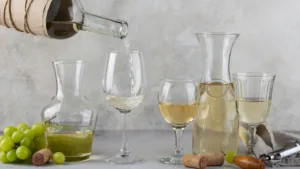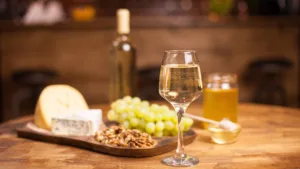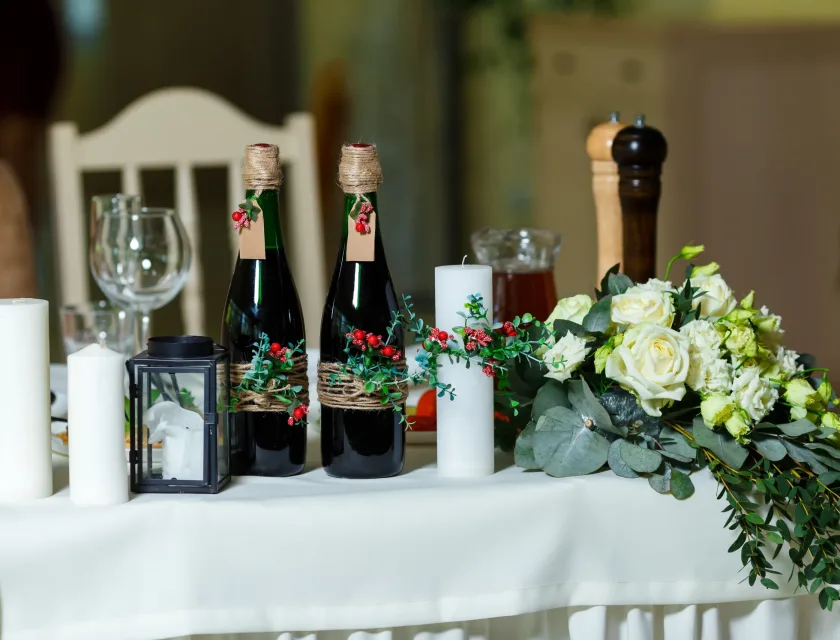Few things feel as inviting as a glass of white wine. Pale gold or shimmering green in the light, white wine offers bright aromas of citrus, stone fruit, or fragrant flowers, creating an instant sense of refreshment and elegance. A glass of white wine fits beautifully into so many moments, from lively gatherings with friends to quiet evenings on the balcony or a seafood feast that calls for something crisp and vibrant. This white wine serving guide shares practical tips to help you appreciate your wine to the fullest and make every glass feel special.
Serving white wine properly is more than chilling a bottle and grabbing the first glass within reach. The best way to serve white wine involves getting details right, like the perfect temperature and the right glassware, which brings out the wine’s unique personality. Each small step adds up to a much richer tasting experience, letting you enjoy every aroma, texture, and flavour the wine has to offer.
A cool, zesty Sauvignon Blanc bursts with freshness when served cold, while an oak-aged Chardonnay reveals lush, creamy layers when poured a touch warmer. Even glass shape matters, focusing aromas and guiding how the wine spreads across your palate.
These details can transform an ordinary sip into something memorable. So let’s get started!
Also Read: Everything You Wanted To Learn About Australian Wine Labels
Table of Contents
ToggleDifferent Types of White Wine
White wines aren’t a monolith; they span an incredible range of styles, flavours, and textures. Here’s a quick primer on some key types:
- Light and Crisp Whites: These wines are all about freshness and high acidity. Think Sauvignon Blanc, Pinot Grigio, and Albariño. Expect notes of citrus, green apple, and herbs.
- Aromatic Whites: These wines are intensely perfumed and expressive, often with a touch of sweetness. Riesling, Gewürztraminer, and Muscat fall into this group, offering aromas of florals and tropical fruit
- Rich and Creamy Whites: Chardonnay leads this category, especially when it is aged in oak and undergoes malolactic fermentation- a secondary process in winemaking where sharp malic acid converts into softer lactic acid, making wine smoother and creamier. These wines bring flavours of ripe stone fruits, vanilla, butter, and toasty notes.
- Mineral and Elegant Whites: Wines like Chablis or certain Italian whites have a lean, mineral-driven profile. They’re all about subtlety and finesse.
Knowing what kind of white you’re pouring helps you choose the right glassware and serving temperature.
Glassware for White Wine

Believe it or not, the shape of your glass can significantly impact how white wine tastes. Here’s how to pick the right one:
- Standard White Wine Glass: With a smaller bowl than red wine glasses, it helps preserve the wine’s delicate aromas while keeping it cooler for longer. Ideal for light, crisp wines.
- Chardonnay Glass: A slightly larger bowl suits richer whites like oaked Chardonnays. It allows for greater aeration, releasing more complex aromas and flavours.
- Tulip-Shaped Glass: Perfect for aromatic whites like Riesling. Its narrow opening concentrates intense floral and fruity aromas.
Using the proper glass ensures your white wine reveals its full bouquet and maintains its ideal serving temperature.
Also Read: Best White Wines And Indian Food Pairings
Serving Temperature for White Wine
Temperature can make or break a white wine experience. Serve it too cold, and you mute its flavours and aromas. Too warm, and it becomes flabby and loses its crispness.
Here’s a quick guide:
- Light and Crisp Whites: 7–10°C. Chill these wines well to enhance their refreshing character.
- Aromatic Whites: 8–10°C. Slightly warmer temperatures help unlock those vibrant aromatics.
- Rich and Creamy Whites: 10–13°C. A bit of warmth brings out the wine’s texture and complexity.
A handy tip: Chill your white wine in the fridge for about two hours before serving. If it’s too cold when you pour, just let it warm in the glass for a few minutes.
Decanting White Wine
Decanting isn’t just for reds! While not always necessary, certain whites, especially high-end, oaked Chardonnays or aged Rieslings, benefit from a bit of aeration. Decanting helps open up aromas and integrate flavours, making the wine feel smoother and more harmonious.
Perfect Food Pairings

White wine’s versatility makes it a dream at the dinner table. Here are some classic pairings:
- Sauvignon Blanc: Pair with fresh goat cheese, green salads, or seafood like oysters. Its high acidity cuts through creamy textures and brightens delicate dishes.
- Pinot Grigio: Light pasta dishes, grilled fish, or antipasto platters. Its crispness complements subtle flavours without overpowering.
- Chardonnay: Enjoy with roast chicken, creamy pasta, or lobster. Oaked versions stand up to rich sauces beautifully.
- Riesling: Fantastic with spicy Asian cuisine, pork dishes, or lightly sweet desserts. Its slight sweetness balances heat and spice.
- Albariño: Pairs well with sushi, shellfish, and light Mediterranean fare. Its salinity and citrus notes mirror ocean flavours perfectly.
Don’t be afraid to experiment; wine pairing is as much about personal preference as it is about rules.
Looking for amazing wines and spirits recommendations? Click here to check out the winners of the India Wines And Spirits Award 2024 edition.


